Motorcycle Investor mag
Our bikes - Triumph T160
From Motorcycle Trader mag #276, circa Oct 2013 - see the video at the end of the story
by Guy 'Guido' Allen
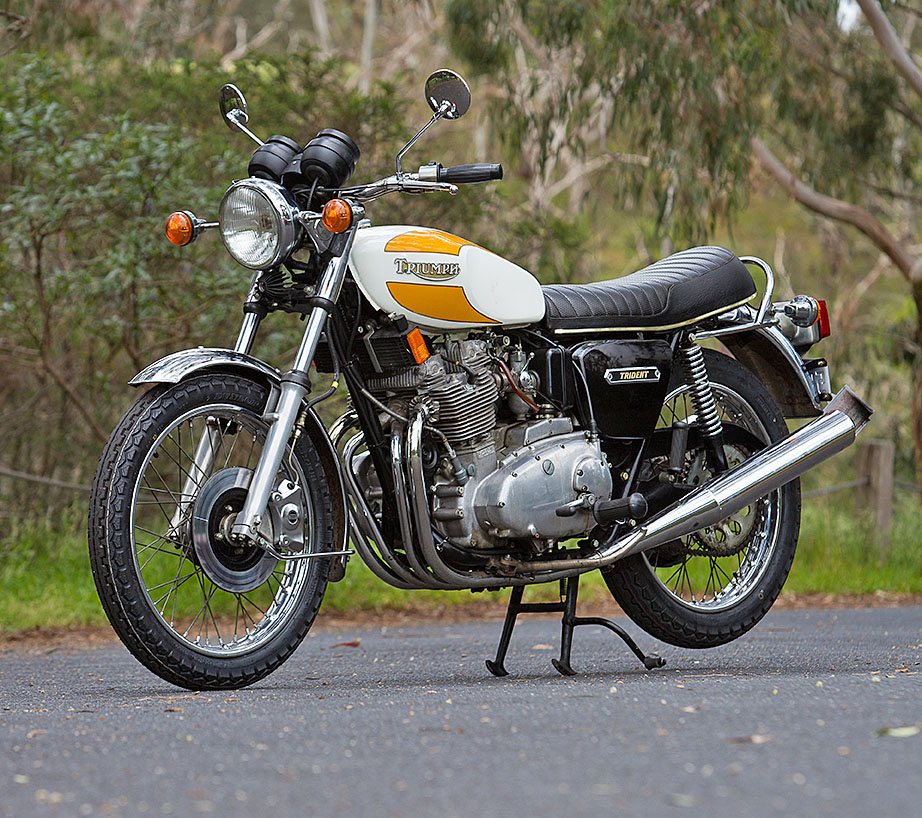
Last of the 3-pot screamers
Guido adds a little Meriden style to his shed
It was proof that muggins can’t be trusted with cash. I’d just sold a car but wasn’t actually looking for a bike. And if I was, I had in mind a first model GSX-R1100 – it was a mistake to sell the H model we had a while ago. Then, during a casual cruise through the online classifieds (iPads should be banned), this rather nice 1975 T160 popped up, dead original and claiming just 2100 miles from new.
It was listed by Central Motorcycles in Melbourne, a whole 10 minutes from our office. The inevitable happened: Greg from Central started the monster, it sounded good, we haggled, and next thing you know it’s being loaded onto a trailer for the trip home.
The T160 was in fact the classic bike Spannerman always said I should own. According to him, it’s big, comfortable and relatively straight-forward to ride. Of course since then I bought the sodding Sunbeam S7 (1947 - the difficult early version), a 1973 T150V (predecessor to the T160) and a 1947 Indian Chief. Everything but what he advised, with mixed results.
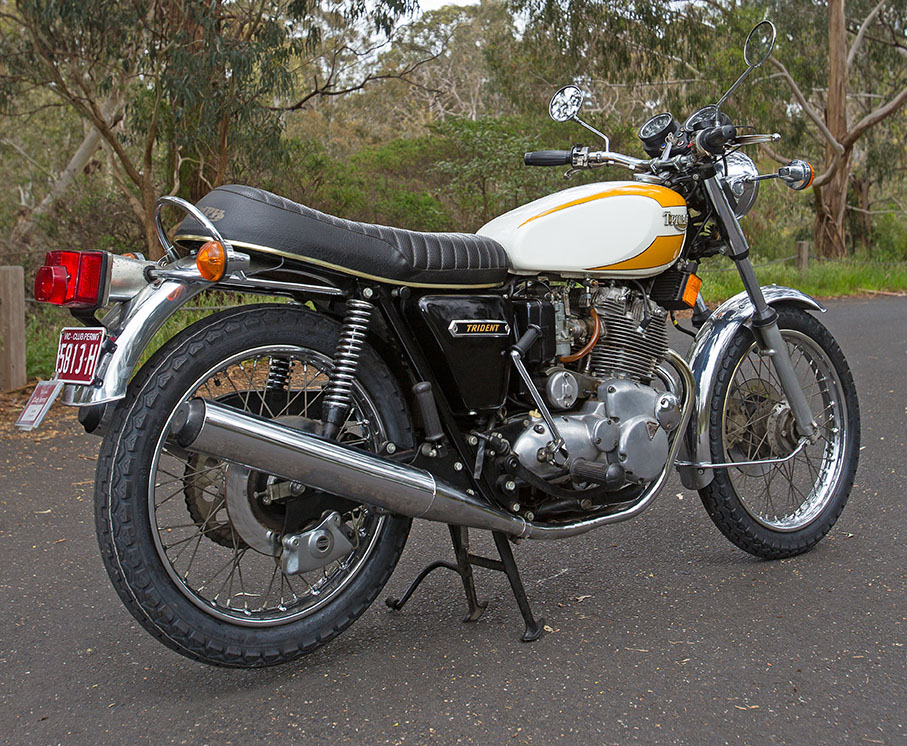
No matter, we got the T160 home and had a closer look. The first things to go would be the 40-year-old tyres, one of which was on the wrong way round – from the factory. The Meriden factory was going through some traumatic times, so an improperly fitted hoop was entirely possible.
Oddly enough, this series wears the same size rubber front and rear, namely a 4.10 x 19. The fronts never looked right, so we took a punt and went for a slightly narrower size, which has transformed the steering from that I recall on the T150V. Much lighter and sharper. The rubber is a replica of the original, a TT100 Dunlop pattern.
Next on the list were those bloody silly high-rise handlebars. This is an American import and there seemed to be a period in history when you could not sell a machine in the USA without them. It’s a job I’d normally tackle myself, or give to British classic specialist Phil Pilgrim at Union Jack Motorcycles, but since the machine was already in Stafford’s workshop it was easier to leave it with them.
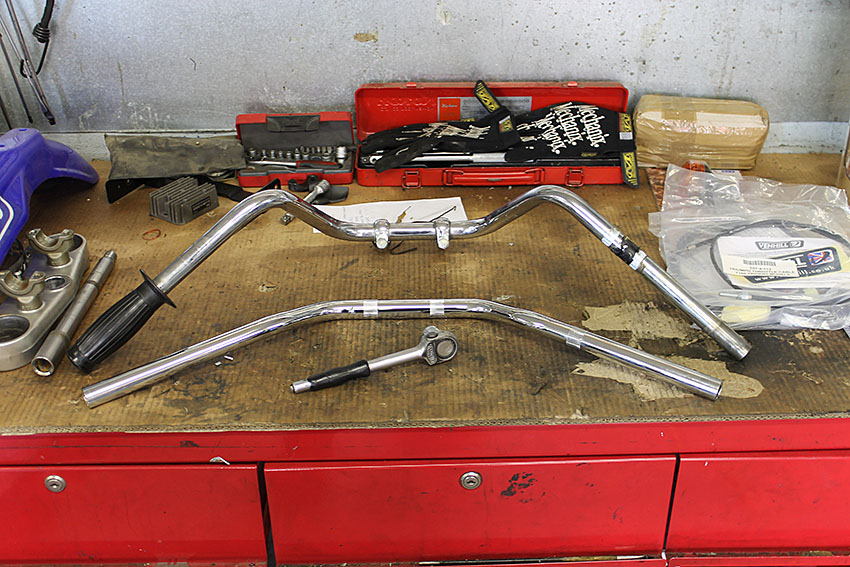
In any case, Pilgrim had all the bits I wanted, including English style flat handlebars, shorter cables and hydraulic line, plus air and oil filters. There was a bit of a fiddle getting the clutch cable in right – again something that hadn’t been done properly at the factory, either.
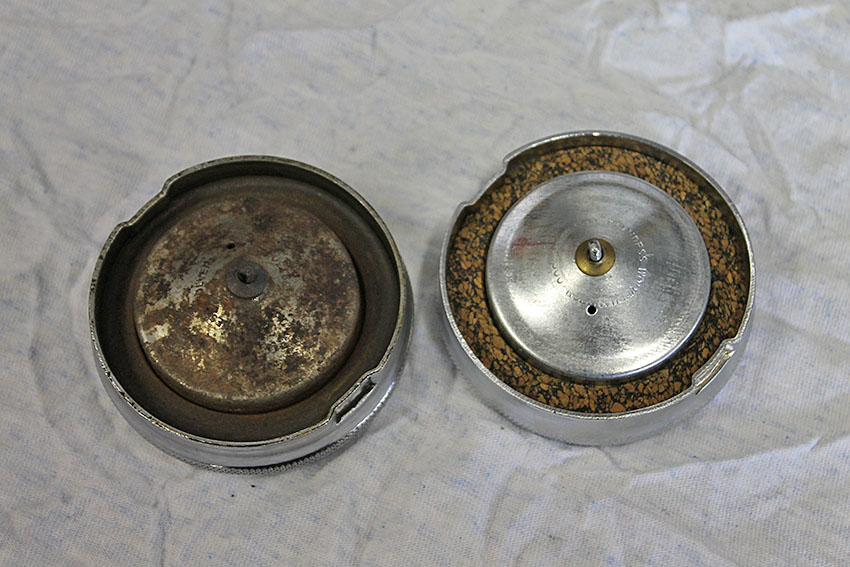
More importantly, the bike was running badly once it got a bit of exercise. We discovered the fuel cap breather was blocked (Union Jack had one of those in stock, too), the air filter was disintegrating through age and the carburetors could use a clean.
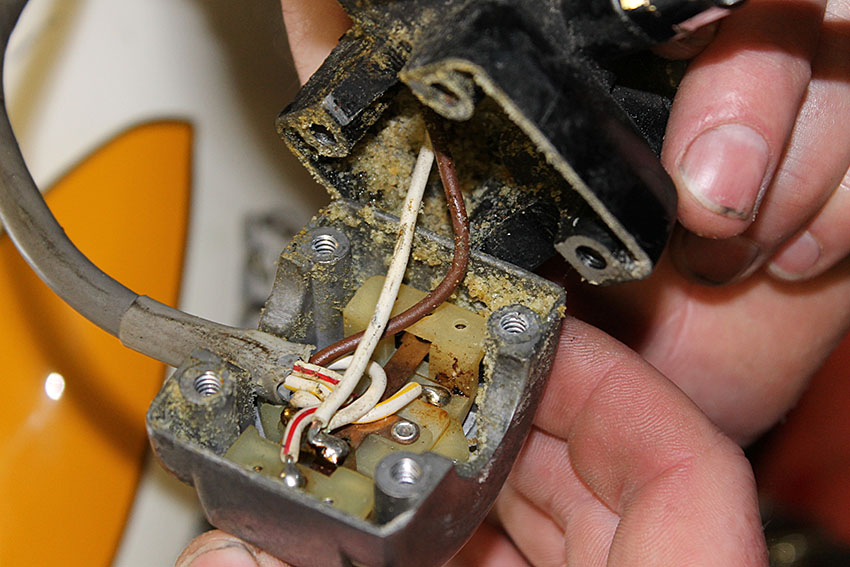
Age had also got to the electrics, most notable the inside of the switchblocks, which needed the old grease cleaned out and a general lube. That also fixed all the weird electrical issues which had been popping up.
With that lot sorted, we finally got out on the road. What’s it like? It’s heavy at near enough to 230 kilos, with the weight carried fairly high. There are some big differences between this, the last of the Tridents and its predecessor, the T150V. It carries the BSA Rocket III version of the engine, in that it has the cylinders canted slightly forward, rather than dead upright. There is electric start, a very different fuel tank, plus the gearshift has been moved to the left as USA authorities were no longer accepting right-shift imports.
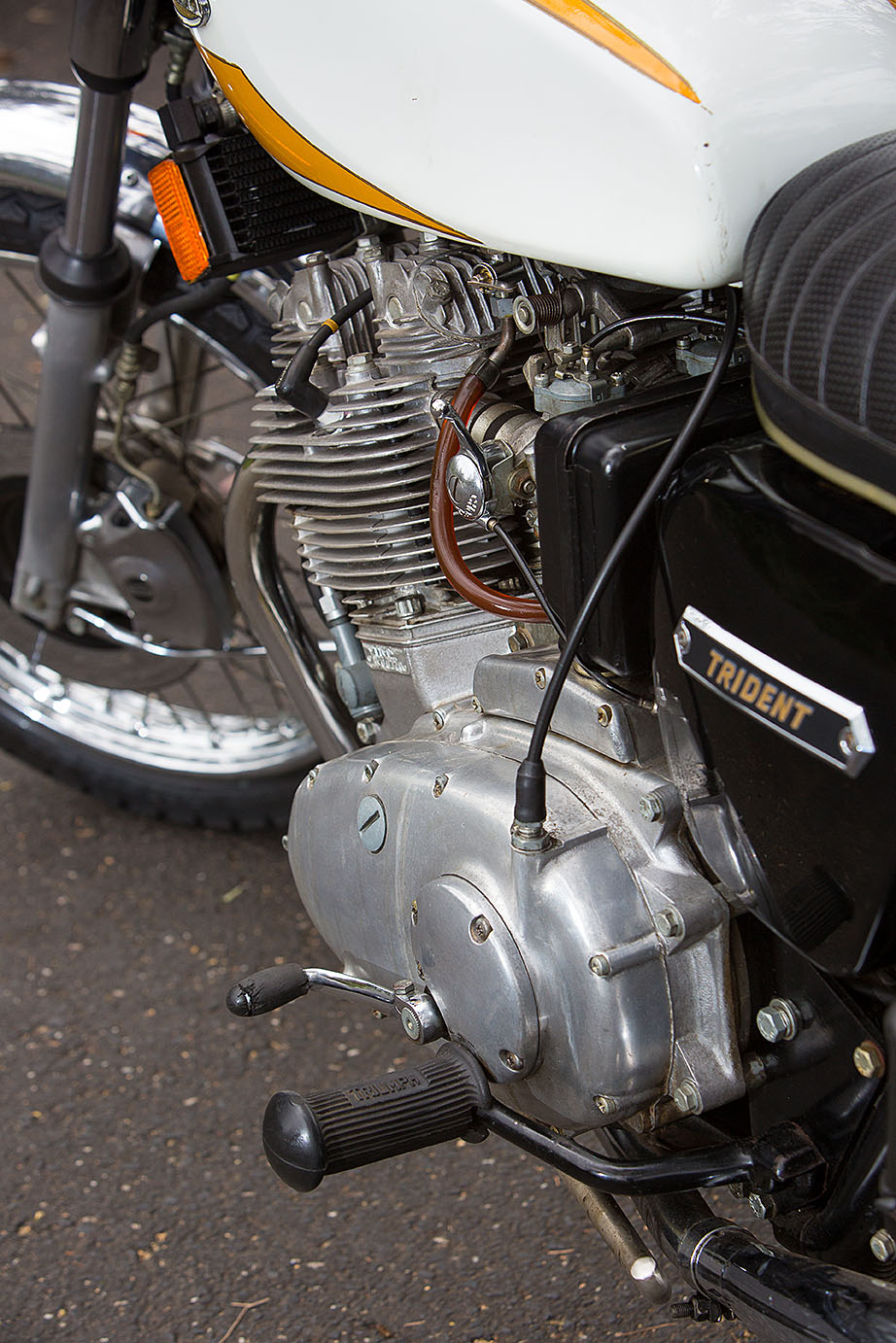
The end result is a machine that feels a little bit modern to ride. This is a revelation to classic owners – for example my Sunbeam has a one-up, three-down right shift, the T150V had a right-side one-down, four-up pattern, while the Indian has a three-speed hand shift and foot clutch!
You can actually walk up to the T160, tickle the carbs (okay, so not everything is modern), turn the choke and hit the starter with a fair degree of confidence it will fire up. Once aboard, all the controls are more or less where you expect them to be.
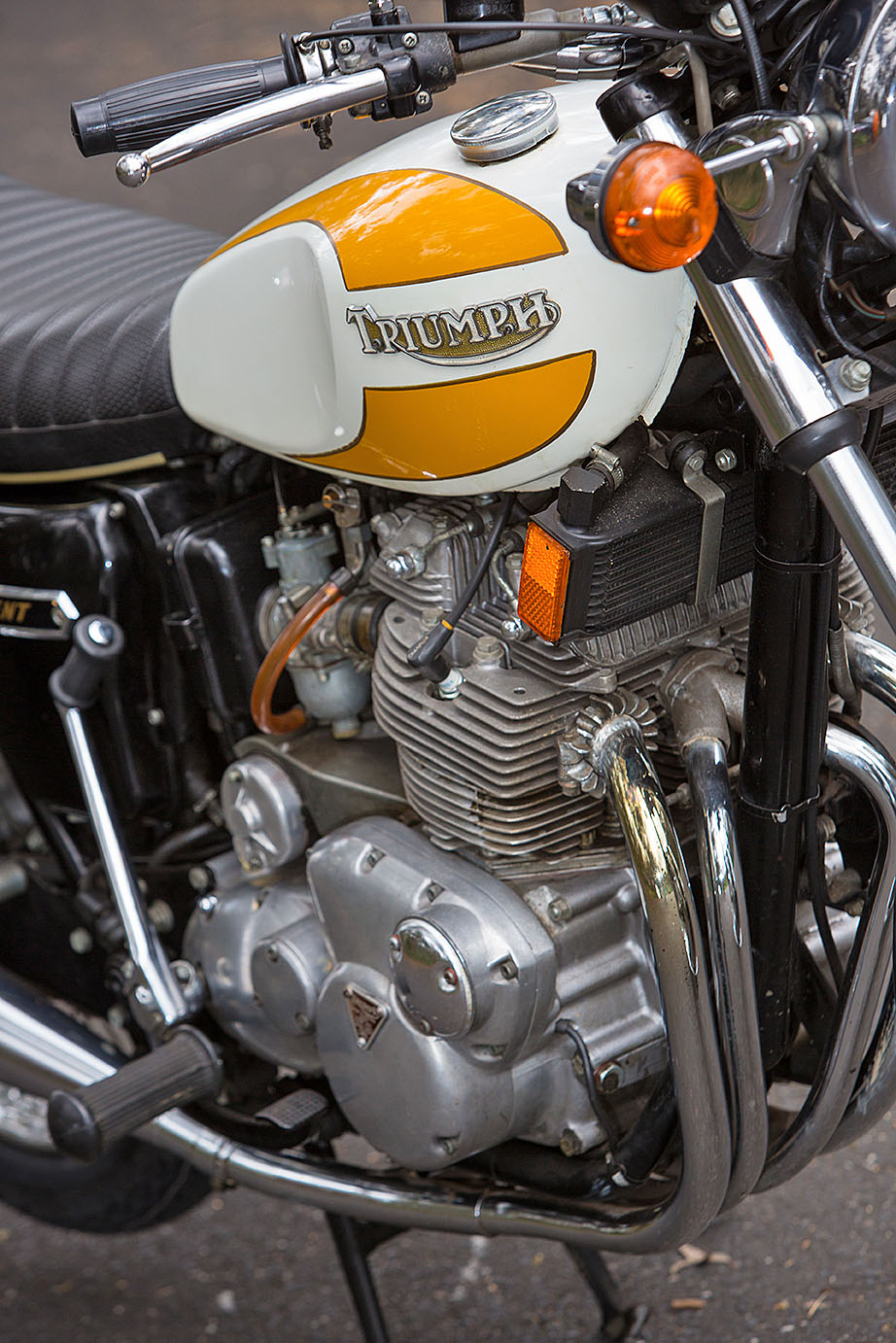
Performance is respectable. We’re talking about 60 horses, which is enough to do modern road speeds without stress. The engine has a distinctive three-pot growl, a pretty linear delivery, while the vibration is most apparent through the footpegs.
Handling is pretty good, so long as you can cope with the tall seat. The suspension has a decent amount of travel, while the steering, aided by the tyre swap, is quite sharp. Brakes are okay in the dry and somewhat alarming in the wet. Typically for 1970s chromed discs, they need to be dried a little before they bite! English and Japanese bikes of the late sixties and early seventies, with chromed or stainless steel discs, were notorious for this.
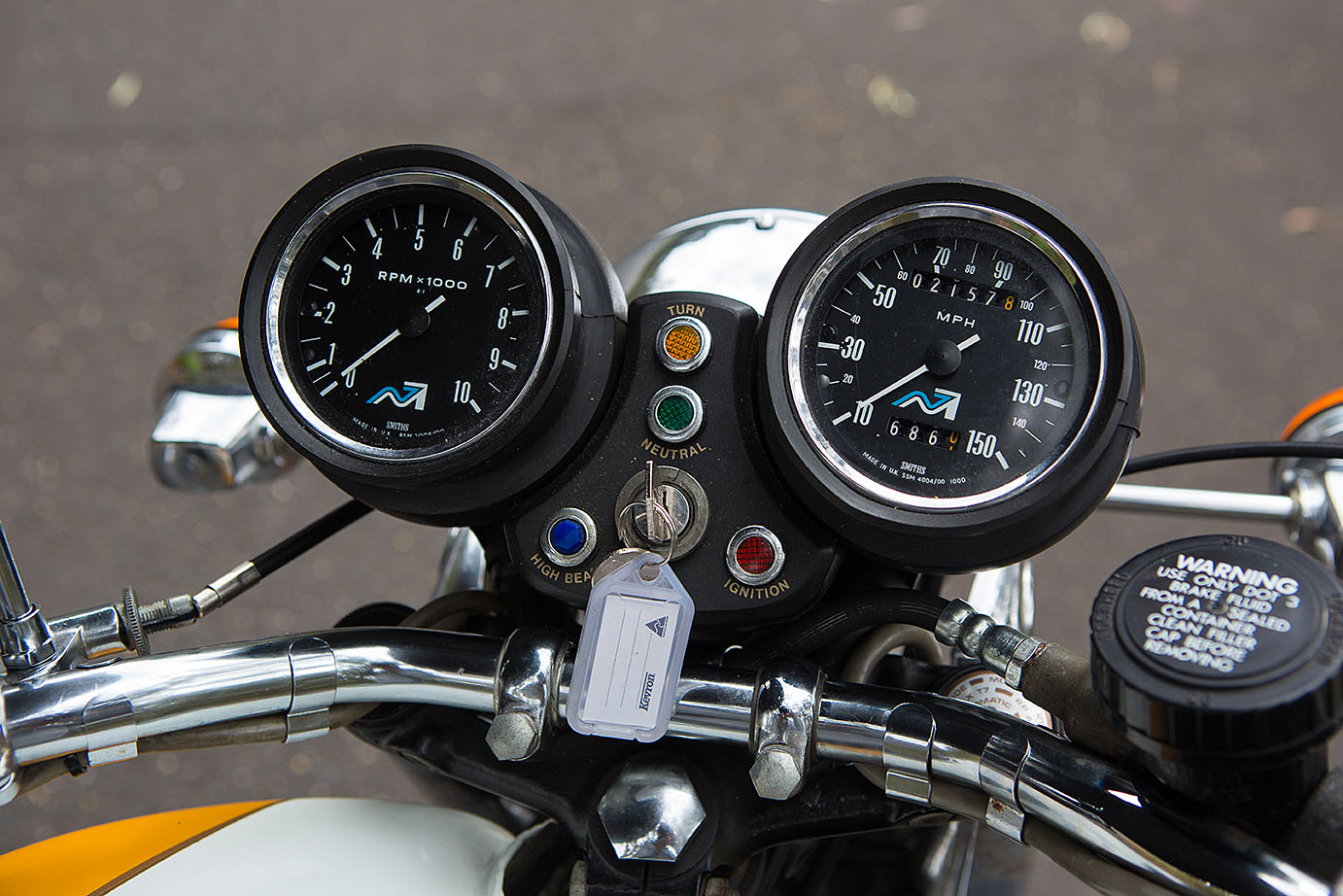
My biggest fear with this machine is the engine seals and bearings might not hold up. Pilgrim warns that ultra-low mileage machines like this need to be treated with a bit of caution, as the lack of use over the years means some critical parts can literally rot over time and fail soon after the bike is recommissioned. He has been known to do a quick rebuild in some cases, rather than start it up as-is.
I’ve decided to take the risk and will just have to be philosophical about it if it doesn’t pay off.
Though we’ve yet to cover a lot of miles, early indications are this will be a very enjoyable rally bike. It’s noticeably more civilised to ride than my T150V, which left me a little ambivalent about Tridents. As Spannerman predicted, the T160 is a different basket of ferrets.
It also represents the last hurrah of the old Meriden Triumph concern, which ceased operations months after this machine was built. In fact the whole NVT parent company (Norton Villiers Triumph) went down in a screaming heap.
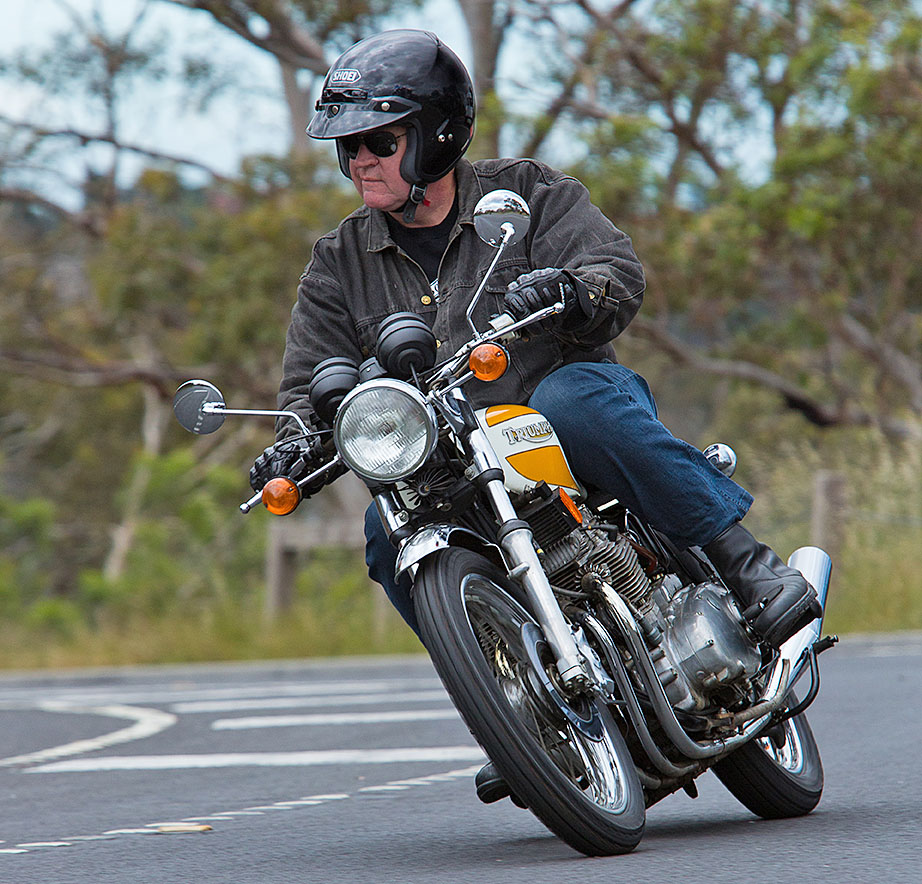
Specs
ENGINE
Type: air-cooled in-line triple with two pushrod valves
per cylinder
Bore and Stroke: 67 x 70.5mm
Displacement: 741cc
Compression ratio: 9.5:1
Fuel system: Amal carburettors
TRANSMISSION
Type: 5-speed constant mesh
Final drive: chain
CHASSIS & RUNNING GEAR
Frame type: Single downtube steel
Front suspension: Conventional 35mm fork
Rear suspension: Twin Girling shocks, preload adjustment
Front brakes: Single 254mm twin disc
Rear brake: Single 254mm twin disc
DIMENSIONS & CAPACITIES
Dry weight: 229kg
Seat height: 794mm
Fuel capacity: @13lt with the USA tank (shown) @19lt with
UK tank
PERFORMANCE
Max power: 58hp @ 7250rpm
Max torque: Not stated
Good
Surprisingly civilised
Decent performance
Not so good
Heavy
Needs a fair bit of TLC
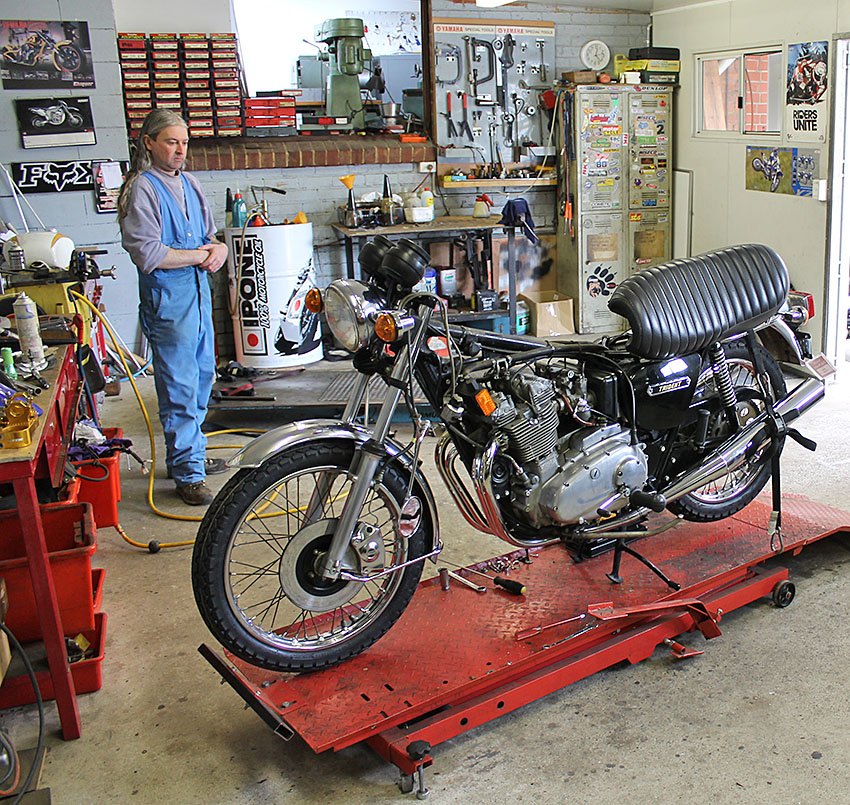
-------------------------------------------------
Produced by AllMoto 61 400 694 722
Privacy: we do not collect cookies or any other data.


Archives
Contact


